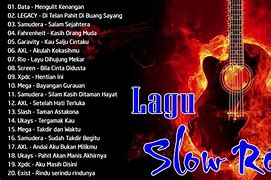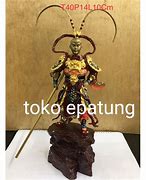
Emperor Alexander mosaic
The Emperor Alexander mosaic is not easy to find for the first-time visitor, located on the second floor in a dark corner of the ceiling. It depicts the emperor Alexander in full regalia, holding a scroll in his right hand and a globus cruciger in his left. A drawing by the Fossatis showed that the mosaic survived until 1849 and that Thomas Whittemore, founder of the Byzantine Institute of America who was granted permission to preserve the mosaics, assumed that it had been destroyed in the earthquake of 1894. Eight years after his death, the mosaic was discovered in 1958 largely through the researches of Robert Van Nice. Unlike most of the other mosaics in Hagia Sophia, which had been covered over by ordinary plaster, the Alexander mosaic was simply painted over and reflected the surrounding mosaic patterns and thus was well hidden. It was duly cleaned by the Byzantine Institute's successor to Whittemore, Paul A. Underwood.[273][274]
The Empress Zoe mosaic on the eastern wall of the southern gallery dates from the 11th century. Christ Pantocrator, clad in the dark blue robe (as is the custom in Byzantine art), is seated in the middle against a golden background, giving his blessing with the right hand and holding the Bible in his left hand. On either side of his head are the nomina sacra IC and XC, meaning Iēsous Christos. He is flanked by Constantine IX Monomachus and Empress Zoe, both in ceremonial costumes. He is offering a purse, as a symbol of donation, he made to the church, while she is holding a scroll, symbol of the donations she made. The inscription over the head of the emperor says: "Constantine, pious emperor in Christ the God, king of the Romans, Monomachus". The inscription over the head of the empress reads as follows: "Zoë, the very pious Augusta". The previous heads have been scraped off and replaced by the three present ones. Perhaps the earlier mosaic showed her first husband Romanus III Argyrus or her second husband Michael IV. Another theory is that this mosaic was made for an earlier emperor and empress, with their heads changed into the present ones.[275]
The Comnenus mosaic, also located on the eastern wall of the southern gallery, dates from 1122. The Virgin Mary is standing in the middle, depicted, as usual in Byzantine art, in a dark blue gown. She holds the Christ Child on her lap. He gives his blessing with his right hand while holding a scroll in his left hand. On her right side stands emperor John II Comnenus, represented in a garb embellished with precious stones. He holds a purse, symbol of an imperial donation to the church. His wife, the empress Irene of Hungary stands on the left side of the Virgin, wearing ceremonial garments and offering a document. Their eldest son Alexius Comnenus is represented on an adjacent pilaster. He is shown as a beardless youth, probably representing his appearance at his coronation aged seventeen. In this panel, one can already see a difference with the Empress Zoe mosaic that is one century older. There is a more realistic expression in the portraits instead of an idealized representation. The Empress Irene (born Piroska), daughter of Ladislaus I of Hungary, is shown with plaited blond hair, rosy cheeks, and grey eyes, revealing her Hungarian descent. The emperor is depicted in a dignified manner.[276]
The Deësis mosaic (Δέησις, "Entreaty") probably dates from 1261. It was commissioned to mark the end of 57 years of Latin Catholic use and the return to the Eastern Orthodox faith. It is the third panel situated in the imperial enclosure of the upper galleries. It is widely considered the finest in Hagia Sophia, because of the softness of the features, the humane expressions and the tones of the mosaic. The style is close to that of the Italian painters of the late 13th or early 14th century, such as Duccio. In this panel the Virgin Mary and John the Baptist (Ioannes Prodromos), both shown in three-quarters profile, are imploring the intercession of Christ Pantocrator for humanity on Judgment Day. The bottom part of this mosaic is badly deteriorated.[277] This mosaic is considered as the beginning of a renaissance in Byzantine pictorial art.[278]
FAQs about Hagia Sophia
Hagia Sophia is originally a Greek name, meaning “Holy Wisdom.” According to historical studies, Hagia Sophia was an Egyptian Coptic saint born in Badrashin, Giza.
She used to worship idols, but her feelings were directed towards Christianity due to her Christian neighbours, who persevered going to church and spread love and affection.
Sophia, whom her friends and neighbours influenced, wanted to learn more about Christianity and regularly went to church to learn. A few days later, she converted to Christianity.
However, the Byzantine ruler saw that her deeds angered the gods and ordered her to return to idolatry, but she refused. So, he ordered his soldiers to torture her with whips, cut off her tongue, and sent her into a dark cell. Finally, he ordered his guards to decapitate her.
When King Constantine and his mother, Queen Helena, heard of the many blessings of the saint in Egypt, he ordered to transfer her body to Istanbul after he had built a great church in her honour.
Located in the Sultan Ahmed district in Istanbul, Hagia Sophia is a unique art and architecture work; it is one of the most prominent architectural monuments in the Middle East. It used to be a mosque for 481 years, then turned into a museum in 1934.
King Constantine and his mother, Queen Helena, built it in 325 AD. After being burnt and destroyed, Hagia Sophia was rebuilt in 5 years by Emperor Justinian (Justinian I) to be completed in 573.
About 100 architects took part in the construction work, supervised by two senior architects. Every architect worked with 100 workers.
Hagia Sophia is located on the European side of Istanbul, in the Sultan Ahmed district.
Hagia Sophia was built in 325 AD by King Constantine and his mother, Queen Helena.
Hagia Sophia was originally a church before it was turned into a mosque by Sultan Mehmed Fatih in 1453. Then it was turned into a museum in 1934 by Mustafa Kemal Ataturk, and finally back to a mosque in 2020.
The Most Beautiful Places in Alanya
Information about Baghdad Street
Edited by Safaraq Tourism
Hagia Sophia kembali jadi masjid setelah sempat berstatus museum dan ditetapkan UNESCO sebagai warisan dunia. Melalui akun Twitternya, Presiden Turki Recep Tayyip Erdogan menganggapnya sebagai kebangkitan bangunan bersejarah tersebut.
"Kebangkitan Hagia Sophia...," tulis Erdogan di akun @RTErdogan yang dilihat detikcom pada Sabtu (11/7/2020). Tweet ini mendapat 23 ribu retweet dan komentar serta 76 ribu like dari para netizen.
SCROLL TO CONTINUE WITH CONTENT
Kembalinya Hagia Sophia menjadi masjid sesuai Majelis Negara Turki membatalkan keputusan kabinet pada 1934. Keputusan ini mengundang reaksi dari masyarakat internasional, dengan sebagian mendukung dan menolak keputusan tersebut.
Terlepas dari reaksi netizen, warga internasional, dan sikap tiap negara, Hagia Sophia memang punya sejarah yang sangat panjang. Dikutip dari History, Hagia Sophia jadi saksi kejatuhan dan kebangkitan dinasti penguasa Turki.
Hagia Sophia dalam bahasa Turki disebut Ayasofya sedangkan dalam bahasa latin adalah Sancta Sophia. Nama Hagia Sophia artinya adalah kebijaksanaan sesuai peruntukan bangunan tersebut sebagai rumah ibadah.
360 Masehi: Kaisar Bizantium, Constantius I, memerintahkan pembangunan Hagia Sophia sebagai sebuah gereja untuk umat Kristen Ortodoks Yunani di Konstantinopel yang kini bernama Istanbul. Awalnya gereja ini beratapkan kayu.
404 : Bangunan Hagia Sophia pertama terbakar akibat kerusuhan yang terjadi di sekitar bangunan tersebut. Kerusuhan diakibatkan konflik politik antar keluarga Kaisar Arkadios yang kemudian menjadi penguasa pada 395-408 AD.
415: Struktur kedua Hagia Sophia selesai dibangun Kaisar Theodosis II yang merupakan penerus Arkadio. Bangunan yang baru memiliki lima nave (tempat bangku-bangku umat) dan jalan masuk yang khas dengan atap terbuat dari kayu.
532: Dikutip dari Encyclopedia Britannica, Hagia Sophia terbakar kedua kalinya dalam peristiwa Revolusi Nika atau Nika Revolt. Revolusi tersebut melawan Kaisar Justinian I yang memerintah pada 527-565. Saat itu Hagia Sophia masih menjadi bangunan penting penganut Ortodoks Yunani.
532: Masih di tahun yang sama, Kaisar Justinian memerintahkan penghancuran Hagia Sophia karena kondisinya yang rusak parah. Dia memerintahkan pembangunan kembali gereja tersebut dengan menunjuk arsitek Isidoros (Milet) dan Anthemios (Tralles).
537: Pembangunan ketiga Hagia Sophia selesai dalam lima tahun dan ibadah pertama dilakukan pada 27 Desember 537. Saat itu Kaisar Justinian disebut mengatakan, "Tuhanku, terima kasih atas kesempatan membangun sebuah tempat ibadah."
Hagia Sophia melanjutkan perannya yang sangat penting dalam politik dan sejarah Bizantium, termasuk menjadi saksi Perang Salib. Wilayah Konstantinopel termasuk Hagia Sophia sempat berada di bawah kekuasaan Romawi untuk waktu singkat. Kekaisaran Bizantium dikisahkan berhasil menguasai kembali kota tersebut dan Hagia Sophia yang kembali rusak.
Perubahan besar Hagia Sophia selanjutnya terjadi sekitar 200 tahun kemudian saat Dinasti Ottoman menguasai Kontantinopel. Di bawah pimpinan Sultan Muhammad Al Fatih (Mehmed II), dinasti ini berhasil menaklukkan wilayah tersebut dan mengganti namanya menjadi Istanbul pada 1453.
Dengan pengaruh Islam, Hagia Sophia diubah menjadi masjid dengan menutup ornamen bangunan yang bertema Orthodox. Ornamen diganti kaligrafi yang didesain Kazasker Mustafa İzzet. Kaligrafi tersebut antara lain tulisan Allah SWT, Nabi Muhammad SAW, empat khalifah pertama, dan dua cucu Rasulullah SAW.
Church of Theodosius II
A second church on the site was ordered by Theodosius II (r. 402–450), who inaugurated it on 10 October 415.[36] The Notitia Urbis Constantinopolitanae, a fifth-century list of monuments, names Hagia Sophia as Magna Ecclesia, 'Great Church', while the former cathedral Hagia Irene is referred to as Ecclesia Antiqua, 'Old Church'. At the time of Socrates of Constantinople around 440, "both churches [were] enclosed by a single wall and served by the same clergy".[25] Thus, the complex would have encompassed a large area including the future site of the Hospital of Samson.[35] If the fire of 404 destroyed only the 4th-century main basilica church, then the 5th century Theodosian basilica could have been built surrounded by a complex constructed primarily during the fourth century.[35]
During the reign of Theodosius II, the emperor's elder sister, the Augusta Pulcheria (r. 414–453) was challenged by the patriarch Nestorius (r. 10 April 428 – 22 June 431).[37][38] The patriarch denied the Augusta access to the sanctuary of the "Great Church", likely on 15 April 428.[38] According to the anonymous Letter to Cosmas, the virgin empress, a promoter of the cult of the Virgin Mary who habitually partook in the Eucharist at the sanctuary of Nestorius's predecessors, claimed right of entry because of her equivalent position to the Theotokos – the Virgin Mary – "having given birth to God".[39][38] Their theological differences were part of the controversy over the title theotokos that resulted in the Council of Ephesus and the stimulation of Monophysitism and Nestorianism, a doctrine, which like Nestorius, rejects the use of the title.[37] Pulcheria along with Pope Celestine I and Patriarch Cyril of Alexandria had Nestorius overthrown, condemned at the ecumenical council, and exiled.[39][37]
The area of the western entrance to the Justinianic Hagia Sophia revealed the western remains of its Theodosian predecessor, as well as some fragments of the Constantinian church.[35] German archaeologist Alfons Maria Schneider began conducting archaeological excavations during the mid-1930s, publishing his final report in 1941.[35] Excavations in the area that had once been the 6th-century atrium of the Justinianic church revealed the monumental western entrance and atrium, along with columns and sculptural fragments from both 4th- and 5th-century churches.[35] Further digging was abandoned for fear of harming the structural integrity of the Justinianic building, but parts of the excavation trenches remain uncovered, laying bare the foundations of the Theodosian building.
The basilica was built by architect Rufinus.[40][41] The church's main entrance, which may have had gilded doors, faced west, and there was an additional entrance to the east.[42] There was a central pulpit and likely an upper gallery, possibly employed as a matroneum (women's section).[42] The exterior was decorated with elaborate carvings of rich Theodosian-era designs, fragments of which have survived, while the floor just inside the portico was embellished with polychrome mosaics.[35] The surviving carved gable end from the centre of the western façade is decorated with a cross-roundel.[35] Fragments of a frieze of reliefs with 12 lambs representing the 12 apostles also remain; unlike Justinian's 6th-century church, the Theodosian Hagia Sophia had both colourful floor mosaics and external decorative sculpture.[35]
At the western end, surviving stone fragments of the structure show there was vaulting, at least at the western end.[35] The Theodosian building had a monumental propylaeum hall with a portico that may account for this vaulting, which was thought by the original excavators in the 1930s to be part of the western entrance of the church itself.[35] The propylaeum opened onto an atrium which lay in front of the basilica church itself. Preceding the propylaeum was a steep monumental staircase following the contours of the ground as it sloped away westwards in the direction of the Strategion, the Basilica, and the harbours of the Golden Horn.[35] This arrangement would have resembled the steps outside the atrium of the Constantinian Old St Peter's Basilica in Rome.[35] Near the staircase, there was a cistern, perhaps to supply a fountain in the atrium or for worshippers to wash with before entering.[35]
The 4th-century skeuophylakion was replaced in the 5th century by the present-day structure, a rotunda constructed of banded masonry in the lower two levels and of plain brick masonry in the third.[35] Originally this rotunda, probably employed as a treasury for liturgical objects, had a second-floor internal gallery accessed by an external spiral staircase and two levels of niches for storage.[35] A further row of windows with marble window frames on the third level remain bricked up.[35] The gallery was supported on monumental consoles with carved acanthus designs, similar to those used on the late 5th-century Column of Leo.[35] A large lintel of the skeuophylakion's western entrance – bricked up during the Ottoman era – was discovered inside the rotunda when it was archaeologically cleared to its foundations in 1979, during which time the brickwork was also repointed.[35] The skeuophylakion was again restored in 2014 by the Vakıflar.[35]
A fire started during the tumult of the Nika Revolt, which had begun nearby in the Hippodrome of Constantinople, and the second Hagia Sophia was burnt to the ground on 13–14 January 532. The court historian Procopius wrote:[43]
And by way of shewing that it was not against the Emperor alone that they [the rioters] had taken up arms, but no less against God himself, unholy wretches that they were, they had the hardihood to fire the Church of the Christians, which the people of Byzantium call "Sophia", an epithet which they have most appropriately invented for God, by which they call His temple; and God permitted them to accomplish this impiety, foreseeing into what an object of beauty this shrine was destined to be transformed. So the whole church at that time lay a charred mass of ruins.
— Procopius, De aedificiis, I.1.21–22
Church of Constantius II
The first church on the site was known as the Magna Ecclesia (Μεγάλη Ἐκκλησία, Megálē Ekklēsíā, 'Great Church')[21][22] because of its size compared to the sizes of the contemporary churches in the city.[13] According to the Chronicon Paschale, the church was consecrated on 15 February 360, during the reign of the emperor Constantius II (r. 337–361) by the Arian bishop Eudoxius of Antioch.[23][24] It was built next to the area where the Great Palace was being developed. According to the 5th-century ecclesiastical historian Socrates of Constantinople, the emperor Constantius had c. 346 "constructed the Great Church alongside that called Irene which because it was too small, the emperor's father [Constantine] had enlarged and beautified".[25][23] A tradition which is not older than the 7th or 8th century reports that the edifice was built by Constantius' father, Constantine the Great (r. 306–337).[23] Hesychius of Miletus wrote that Constantine built Hagia Sophia with a wooden roof and removed 427 (mostly pagan) statues from the site.[26] The 12th-century chronicler Joannes Zonaras reconciles the two opinions, writing that Constantius had repaired the edifice consecrated by Eusebius of Nicomedia, after it had collapsed.[23] Since Eusebius was the bishop of Constantinople from 339 to 341, and Constantine died in 337, it seems that the first church was erected by Constantius.[23]
The nearby Hagia Irene ("Holy Peace") church was completed earlier and served as cathedral until the Great Church was completed. Besides Hagia Irene, there is no record of major churches in the city-centre before the late 4th century.[24] Rowland Mainstone argued the 4th-century church was not yet known as Hagia Sophia.[27] Though its name as the 'Great Church' implies that it was larger than other Constantinopolitan churches, the only other major churches of the 4th century were the Church of St Mocius, which lay outside the Constantinian walls and was perhaps attached to a cemetery, and the Church of the Holy Apostles.[24]
The church itself is known to have had a timber roof, curtains, columns, and an entrance that faced west.[24] It likely had a narthex and is described as being shaped like a Roman circus.[28] This may mean that it had a U-shaped plan like the basilicas of San Marcellino e Pietro and Sant'Agnese fuori le mura in Rome.[24] However, it may also have been a more conventional three-, four-, or five-aisled basilica, perhaps resembling the original Church of the Holy Sepulchre in Jerusalem or the Church of the Nativity in Bethlehem.[24] The building was likely preceded by an atrium, as in the later churches on the site.[29]
According to Ken Dark and Jan Kostenec, a further remnant of the 4th century basilica may exist in a wall of alternating brick and stone banded masonry immediately to the west of the Justinianic church.[30] The top part of the wall is constructed with bricks stamped with brick-stamps dating from the 5th century, but the lower part is of constructed with bricks typical of the 4th century.[30] This wall was probably part of the propylaeum at the west front of both the Constantinian and Theodosian Great Churches.[30]
The building was accompanied by a baptistery and a skeuophylakion.[24] A hypogeum, perhaps with an martyrium above it, was discovered before 1946, and the remnants of a brick wall with traces of marble revetment were identified in 2004.[30] The hypogeum was a tomb which may have been part of the 4th-century church or may have been from the pre-Constantinian city of Byzantium.[30] The skeuophylakion is said by Palladius to have had a circular floor plan, and since some U-shaped basilicas in Rome were funerary churches with attached circular mausolea (the Mausoleum of Constantina and the Mausoleum of Helena), it is possible it originally had a funerary function, though by 405 its use had changed.[30] A later account credited a woman called Anna with donating the land on which the church was built in return for the right to be buried there.[30]
Excavations on the western side of the site of the first church under the propylaeum wall reveal that the first church was built atop a road about 8 m (26 ft) wide.[30] According to early accounts, the first Hagia Sophia was built on the site of an ancient pagan temple,[31][32][33] although there are no artefacts to confirm this.[34]
The Patriarch of Constantinople John Chrysostom came into a conflict with Empress Aelia Eudoxia, wife of the emperor Arcadius (r. 383–408), and was sent into exile on 20 June 404. During the subsequent riots, this first church was largely burnt down.[23] Palladius noted that the 4th-century skeuophylakion survived the fire.[35] According to Dark and Kostenec, the fire may only have affected the main basilica, leaving the surrounding ancillary buildings intact.[35]
Works influenced by the Hagia Sophia
Many buildings have been modeled on the Hagia Sophia's core structure of a large central dome resting on pendentives and buttressed by two semi-domes.
Byzantine churches influenced by the Hagia Sophia include the Hagia Sophia in Thessaloniki, and the Hagia Irene. The latter was remodeled to have a dome similar to the Hagia Sophia's during the reign of Justinian.
Several mosques commissioned by the Ottoman dynasty have plans based on the Hagia Sophia, including the Süleymaniye Mosque and the Bayezid II Mosque.[281][282] Ottoman architects preferred to surround the central dome with four semi-domes rather than two.[283] There are four semi-domes on the Sultan Ahmed Mosque, the Fatih Mosque,[284] and the New Mosque (Istanbul). As with the original plan of the Hagia Sophia, these mosques are entered through colonnaded courtyards. However, the courtyard of the Hagia Sophia no longer exists.
Neo-Byzantine churches modeled on the Hagia Sophia include the Kronstadt Naval Cathedral, Holy Trinity Cathedral, Sibiu[285] and Poti Cathedral. Each closely replicates the internal geometry of the Hagia Sophia. The layout of the Kronstadt Naval Cathedral is nearly identical to the Hagia Sophia in size and geometry. Its marble revetment also mimics the style of the Hagia Sophia.
As with Ottoman mosques, several churches based on the Hagia Sophia include four semi-domes rather than two, such as the Church of Saint Sava in Belgrade.[286][287] The Catedral Metropolitana Ortodoxa in São Paulo and the Église du Saint-Esprit (Paris) both replace the two large tympanums beneath the main dome with two shallow semi-domes. The Église du Saint-Esprit is two thirds the size of the Hagia Sophia.
Several churches combine elements of the Hagia Sophia with a Latin cross plan. For instance, the transept of the Cathedral Basilica of Saint Louis (St. Louis) is formed by two semi-domes surrounding the main dome. The church's column capitals and mosaics also emulate the style of the Hagia Sophia. Other examples include the Alexander Nevsky Cathedral, Sofia, St Sophia's Cathedral, London, Saint Clement Catholic Church, Chicago, and the Basilica of the National Shrine of the Immaculate Conception.
Synagogues based on the Hagia Sophia include the Congregation Emanu-El (San Francisco),[288] Great Synagogue of Florence, and Hurva Synagogue.
Detail of the columns
Detail of the columns
Six patriarchs mosaic in the southern tympanum as drawn by the Fossati brothers
Moasics as drawn by the Fossati brothers
's engraving 1672, looking east and showing the apse mosaic
's engraving 1672, looking west
Watercolour of the interior by
Imperial Gate from the nave
19th-century cenotaph of
, and commander of the 1204
Fountain of Ahmed III from the gate of the külliye, by John Frederick Lewis, 1838
Southern side of Hagia Sophia, looking east, by John Frederick Lewis, 1838
Interior of Haghia Sophia
Hagia Sophia from the south-west, 1914
Hagia Sophia in the snow, December 2015
See also the thematically organised full bibliography in Stroth 2021.[1]
Links to related articles
Loggia of the Empress
The loggia of the empress is located in the centre of the gallery of the Hagia Sophia, above the Imperial Gate and directly opposite the apse. From this matroneum (women's gallery), the empress and the court-ladies would watch the proceedings down below. A green stone disc of verd antique marks the spot where the throne of the empress stood.[241][242]
Two huge marble lustration (ritual purification) urns were brought from Pergamon during the reign of Sultan Murad III. They are from the Hellenistic period and carved from single blocks of marble.[19]
The Marble Door inside the Hagia Sophia is located in the southern upper enclosure or gallery. It was used by the participants in synods, who entered and left the meeting chamber through this door. It is said[by whom?] that each side is symbolic and that one side represents heaven while the other represents hell. Its panels are covered in fruits and fish motifs. The door opens into a space that was used as a venue for solemn meetings and important resolutions of patriarchate officials.[243]
The Nice Door is the oldest architectural element found in the Hagia Sophia dating back to the 2nd century BC. The decorations are of reliefs of geometric shapes as well as plants that are believed to have come from a pagan temple in Tarsus in Cilicia, part of the Cibyrrhaeot Theme in modern-day Mersin Province in south-eastern Turkey. It was incorporated into the building by Emperor Theophilos in 838 where it is placed in the south exit in the inner narthex.[244]
The Imperial Gate is the door that was used solely by the Emperor and his personal bodyguard and retinue.[227] It is the largest door in the Hagia Sophia and has been dated to the 6th century. It is about 7 meters long and Byzantine sources say it was made with wood from Noah's Ark.[245]
In April 2022, the door was vandalised by unknown assailant(s). The incident became known after the Association of Art Historians published a photo with the destruction. The Greek Foreign Ministry condemned the incident, while Turkish officials claimed that "a citizen has taken a piece of the door" and started an investigation.[246]
At the northwest of the building, there is a column with a hole in the middle covered by bronze plates. This column goes by different names; the "perspiring" or "sweating column", the "crying column", or the "wishing column". Legend states that it has been moist since the appearance of Gregory Thaumaturgus near the column in 1200. It is believed that touching the moisture cures many illnesses.[247][248]
Hagia Sophia Cathedral
Hagia Sophia was built during the Eastern Roman Empire (395 – 1453) in its capital, Byzantine (Istanbul), before it was destroyed by the Roman Emperor Septimius Severus. The church was rebuilt again during the reign of the Roman Emperor Constantine II in 360, called Hagia Sophia (Holy Wisdom).
However, it was destroyed for the second time after 44 years in a rebellion by the city’s dwellers due to the erection of a silver statue of Evdokia, the Eastern Roman Emperor Arcadius’ wife, in front of the Hagia Sophia.
Hagia Sophia was rebuilt in 415 during the reign of Emperor Theodosius II, ruled after Arcadius. It was the biggest church in the Byzantine till 532 when burnt and destroyed in the “Nica Rebellion” during the reign of Justinian I.
After 39 days of the Nika Rebellion, Emperor Justinian (Justinian I) started rebuilding Hagia Sophia, which took five years to be completed in 537.
About 100 architects took part in the construction work, supervised by two senior architects. Every architect worked with 100 workers. The building was rebuilt in a short time, five years and ten months, using bricks instead of wood as stones are resistant to fire and weather conditions.
Justinian asked the governors and kings under his rule to send the finest types of marble to reconstruct Hagia Sophia again. Governors and kings hastened to send the best marble columns, iron bars, and windows, removed from temples, baths, and palaces from all over the empire and secured sending them to Istanbul.
The Persian style was followed in building hagia sufia , using the “elephant’s legs” style. Limestones and bricks were used to make the walls, while bricks made from Rhodes Island’s soil, known for their lightweight, were used to make the dome. The interior decorations were as impressive as its dome.
The opening ceremony was held on 27th December 537, with the participation of Emperor Justinian I.
Hagia Sophia could not maintain its original architectural shape due to the ongoing reconstructions and restorations against the backdrop of natural disasters and wars in the region.
The conquest of Constantinople (Istanbul now) and converting Hagia Sophia into a mosque is the most famous and prominent event in Turkish Islamic history.
After a long siege, Sultan Mehmed Fatih managed to conquer the city on 29th May 1453, headed to Aya Sofia, planted his flag there as a symbol of victory, and threw an arrow towards the dome.
That is how he recorded the conquest. He walked towards one of the temple’s corners, prostrated, and offered prayer, turning this place from a church into a mosque.
Four cylindrical-shaped minarets with Ottoman style were added, and huge paintings with the beautiful names of God, the prophet’s name (Peace be upon him), and Muslim Caliphs’ names were placed in Arabic.
According to official Turkish sources, by conquering Istanbul, Mehmed Fatih received the title of Roman Emperor; consequently, he became the owner of properties registered for the Byzantine family in accordance with this law. Hagia Sophia was registered for Sultan Mehmed Fatih and his endowment. In addition, an official copy of the title deed was issued in Turkish during the reign of the Turkish Republic.
th-century restoration
Many mosaics were uncovered in the 1930s by a team from the Byzantine Institute of America led by Thomas Whittemore. The team chose to let a number of simple cross images remain covered by plaster but uncovered all major mosaics found.
Because of its long history as both a church and a mosque, a particular challenge arises in the restoration process. Christian iconographic mosaics can be uncovered, but often at the expense of important and historic Islamic art. Restorers have attempted to maintain a balance between both Christian and Islamic cultures. In particular, much controversy rests upon whether the Islamic calligraphy on the dome of the cathedral should be removed, in order to permit the underlying Pantocrator mosaic of Christ as Master of the World to be exhibited (assuming the mosaic still exists).[255]
The Hagia Sophia has been a victim of natural disasters that have caused deterioration to the buildings structure and walls. The deterioration of the Hagia Sophia's walls can be directly attributed to salt crystallization. The crystallization of salt is due to an intrusion of rainwater that causes the Hagia Sophia's deteriorating inner and outer walls. Diverting excess rainwater is the main solution to the deteriorating walls at the Hagia Sophia.[256]
Built between 532 and 537, a subsurface structure under the Hagia Sophia has been under investigation, using LaCoste-Romberg gravimeters to determine the depth of the subsurface structure and to discover other hidden cavities beneath the Hagia Sophia. The hidden cavities have also acted as a support system against earthquakes. With these findings using the LaCoste-Romberg gravimeters, it was also discovered that the Hagia Sophia's foundation is built on a slope of natural rock.[257]
The Imperial Gate mosaic is located in the tympanum above that gate, which was used only by the emperors when entering the church. Based on style analysis, it has been dated to the late 9th or early 10th century. The emperor with a nimbus or halo could possibly represent emperor Leo VI the Wise or his son Constantine VII Porphyrogenitus bowing down before Christ Pantocrator, seated on a jewelled throne, giving his blessing and holding in his left hand an open book.[258] The text on the book reads: "Peace be with you" (John 20, John 20:19, 20:26) and "I am the light of the world" (John 8, John 8:12). On each side of Christ's shoulders is a circular medallion with busts: on his left the Archangel Gabriel, holding a staff, on his right his mother Mary.[259]
How to Get to Hagia Sophia?
Hagia Sophia is located in the Sultan Ahmed district, easily reached by the tramway. Visitors can get by tramway and head towards Sultan Ahmed station; the mosque is a 5-minute walk from the station. Or they can use any taxi to get there.
The Architectural Design of Hagia Sophia
The main building is 82 meters high, and its dome is 55.6 meters high, with a 31.7-meter diameter and 40 windows. The building is placed on four massive columns made of green marble; each is 24.3 meters high. At the end of the 20th century, four hidden tilted pillars were discovered against the upper dome, meaning they are the oldest existing pillars in the history of architecture.
The building can be entered through nine doors. It has a basilica style (ancient Roman architecture) known by the Greeks in building their religious monuments and found in Rome. Their buildings are rectangular-shaped from inside and outside, with a spacious frontal atrium, surrounded by a long porch leading to side halls, one of which is the main hall, where the colossal dome rest on.
Halls Surrounding Hagia Sophia and Doors Leading to the Main Hall
Hagia Sophia’s Main Hall Ceiling from Inside
Aya Sofya Holds the First Prayer for 86 Years























